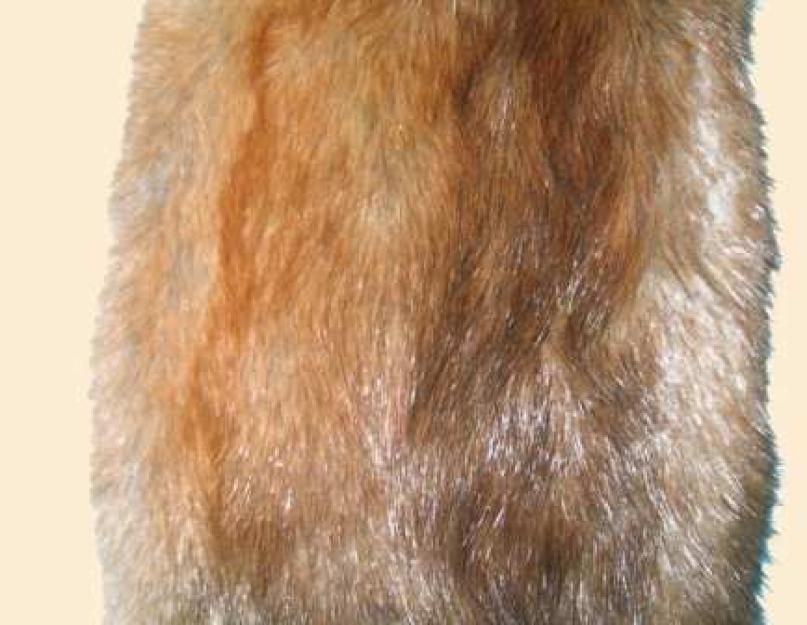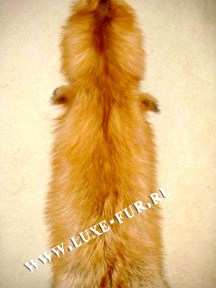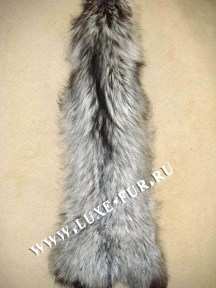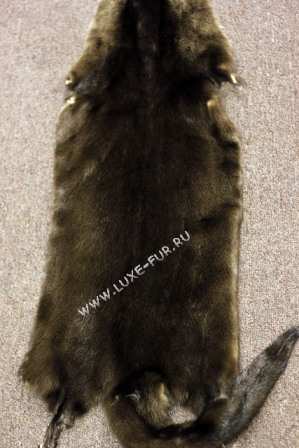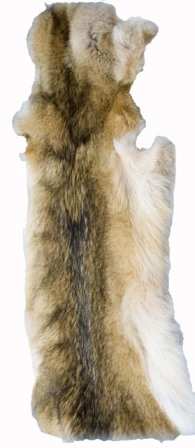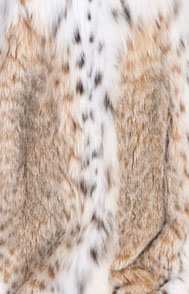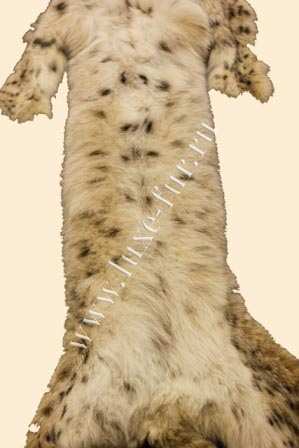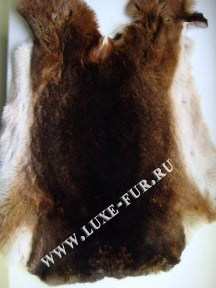Sobol is recognized as the "king" of fur. Refers to the most valuable types of fur semi-finished products. The cost of the skin reaches 800 dollars and higher.
In view of the fact that sable skins are expensive, they are often used to finish products - collar, hood, cuffs, etc.
Sobat not only beautiful toes fur, he, first of all, is an image fur. The product looks respectable.
Sobol is mined in taiga forests. Cellular breeding of Sobility only in Russia. The hair cover of the elastic, very thick, very magnificent, silky, medium height (on the ridge 3-4cm); Pooh is longer than the floss completely covers it across the skin and is almost in a vertical position. The length of the skuffs is 30-50 cm, the tail is 10-20 cm.
Males larger females by 30%.
The painting of the hairproof from sandy yellow to dark brown and almost black, sometimes with the "gray" (it is valued and enjoys in high demand). The most valuable sable - which has a common color is very dark, the darkening of black, the fluff at the base and at the ends of the dark blue.
Tail and paws are dark, head and ears are lighter than on the ridge. On the sore throat there is a neurko expressed, blurred light yellow stain (there is no cell in cell breeding).
Skirts of cellular dilutions differ from the skins of a free sable. The cellular cover has a darker, equalized.
Skirts of a free sable sort, highlighting the area of \u200b\u200bmining - Kryazh: Barguzinsky, Kamchatka, Yakutsky, Sakhalin; Amur, Altai, Minusky, Yenisei, Tobolsky; Tuvinsky.
Barguzi
(Buryatia, Baikal, Chita, Irkutsk region) Sobol has the darkest color of the hair cover (the darker, the more appreciated). Skirts of medium size, V.P. Very thick, very silky.
Yakut
sable - small in size, the quality of fur is good.
Kamchatsky
sable - magnificent, thick, high, rude, rough; (Since last year at the "Soyuzpushnin" auction, the price of the skins of this ridge is 20% more expensive than Barguzinsky).
Yenisei
sable - Large and medium size skins, V.P. Magnificent, less silky, has a rough omission, is a row equated average height.
Amur
sable - the hair is less lush and silky. Low, equalized and thick. It has medium and minor sizes; (Since last year, the price was more than the Yenisei Sable).
On the fur of a sable looks like a fur cunning. And also like Kidus fur (sobat-crossed with a mild cunner, no offspring does not give).
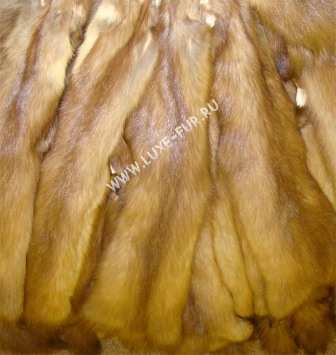 Marten (Marten)
Marten (Marten)
The skins of the curtain are used both on the finish and on the sewing of solid products.
Sableness is similar to, has the following differences: the hair cover is less soft, less lush, less silky; The painting of the hairproof is similar, but it has a clearly pronounced a large chicken thumb.
Help skins are mining soft (forest) and rig (bodice).
The cunning soft looks like a sable height and color of the hairproof (in the northern regions - a bluish shade, the fluff gray, gray-smoky); Length of skuffs 40-50cm. Has a drop-like yellow-orange throat spot. Let's wind the dark color in the tone of the overall color.
Corps Gorskaya - larger sizes, hairs coarse, more rare. Let's drink light, closes its dark suck (like a veil). Gorld spot white, horseshoe.
When sorting the skins allocate the following ridges:
- North and Kubansky (Soft);
- Caucasian and Central Asian (Gorskaya).
According to the materials of the North American fur auction (NAFA) in North America, most cunits are mined in Canada (about 75%), the rest come from the state of the Main (mountainous terrain in the West of the United States) and Alaska.
Fisher (Fisher)- Ilki (or Pecan, Cute Fisherman). The biggest cuckit. The color is dark brown, paws, tail-darker, on the head with a silver tint. The hair cover is thick, long, but rude.
Curbed fur from Canada call - canadian Sable.
The skins of the center of the northern zones of Canada and Alaska are larger in size and harder in weight compared to the skins of the central and southern zones of the United States. Skins from the west of the USA - have a flat hair cover, with a rarefied subcase, with a blurred color tone.
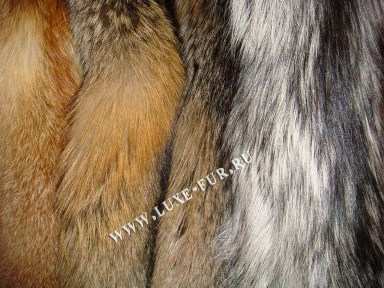 Fox (FOX)
Fox (FOX)
Liser skins are a long-haired forest view. It is often used to finish products, on tailoring hats. Now the fox came into fashion. Liser products are very warm and beautiful.
I prepare the skins of cellular dilution and free.
Skirts free foxes
Red Fox.
- It has different types of color: fire (bright redhead), red (bright red ridge, sides lighter; cruciform pattern on shoulders), Alaty (light redhead, cross on the ridge), bright (sand-yellow ridge; Boca is very Light).
Less valuable: red-gray (gray ridge with reddish stripe along the ridge), gray (ridge and gray sides, strip on the grade of dull color).
Silloduca - On the sides and the ridge of the hair cover may be dark brown, brown with silver darling or red-brown, on the neck and shovels - "Cross".
Cross - "Cross" is pronounced more brightly.
Black-Buura- Dark with a brown tint, there is "silver" - a white zone. At the base of the ears brown hairs.
The ridge affects the size of the skins, the thickness of the leather fabric, the height of the hair., Thickness, softness, silkiness, color. More thick and magnificent V.P., thin leather in areas with a cold climate - Siberia, Ural, North. Less silky, less lush and thick, rude, in size small in areas with high humidity (in the south).
At the auction, the following types of fishing fox are exhibited:
Fox Fox (Grey Fox); Red Fox; Cross Fox; Redhead fox, silver, polar fox.
Corsuck (Flimets steppe free).
The length of the skins of the korsak is less than foxes (less than 55cm), the tip of the tail is dark gray. The hair cover is shorter, more equalized, less lush, suck out more tender than the fox. Coloring - crawled pattern, shades are different, depending on the habitat; The tips of the oesty of dark color, well expressed silver, chevro yellow or dirty and white.
Districted areas: in the steppe and desert areas of Central Asia, in Kazakhstan (long, soft, soft, silver gray color, the flock of light gray or light blue), in the Lower Volga region (low, rough, gray-sand or red -Worky color).
There are on sale mutational forms of foxes and sands (they are purchased as samples for fashion collections).
Skirts of cell fox.
In the skin of the cell fox longer hair cover; Above the elasticity of guides and isgered hair (less adhesiveness of down hair); Hair coloring is more uniform, no or less unwanted shades. The length and area of \u200b\u200bthe skin of the cell fumes are significantly superior to free, which is explained by their value and great demand.
Types of hairproof hair cover Liser of cellular dilution:
Silver-black fox (SILVER FOX)
Platinum hair - white base and black tip;
Silver hair - white base, silver ring, black tip.
If the amount of clarified hair (silver and platinum) is located from the root of the tail to the ears, then it is considered 100% silver.
The best color is - the covering hair is a black, brilliant fluff of dark gray with a bluish tinge; The light zone (the distance between the tops of the fluff and the tip of the crumbling hair) has 10-15 mm width, pure white with glitter. A well-developed veil (black hair tips) covers silver.
Platinum Lisitsa
- hair cover of gray or light gray, the isy hair creates platinum color; Pooh white, with a grayish-bluish tint; Maybe a whiteord.
Golden Platinum
- hair cover ash rose to dark tones; Axular red, platinum, silver, black; Pooh gray with reddish tips; Maybe a whiteord.
Snow-white
- white-colored hair with a cream tint; suck with dark peaks; Pooh white with a gray tint at the base. Black strap on the ridge.
Northern Zarya- white hair cover with a cream tint; Red with red with the transition to black; Pooh how to suck, belt (mane) on the ridge.
Arctic marble
- White hair with cream tint. From the ridge to the shovels, wave-like black and platinum hair are diverged, fluff like a resort.
Dash - Hair cover red-gray different intensity. Resort from reddish brown to light scarlet; Pooh dark gray with a bluish tint and red-yellow.
Fireman - (red) - bright redhead with a dark tail.
Cross
Silloduca
Colikot (brown), pearl, sapphire, burgundy fox.
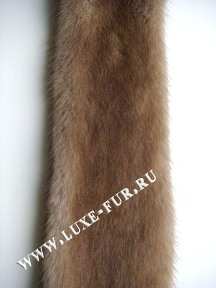 Mink (Mink)
Mink (Mink)
Skins minks consider the "queen of fur".
The skins have a soft and silky hair cover with well-developed dying (their number 90-95%) and protruding isoys. The color is very diverse.
Mink males are much larger than females; They have a higher hair cover and thicker leather tissue (with sorting males and females are isolated separately). The difference in price is up to 60-70%.
There are two types of mink: cellular breeding and hunting (European and American mink).
The American Mink is larger, the hairproke is darker, lush and shaggy, and the European is more gentle and equalized.
Mink skins mined by hunting, (fishing type - Wild Type) are divided into three ridges: Siberian, Northern and Caucasian. Each rush has different scooter size indicators, hairproof quality. The coloring of the freezing flaws can be black (with blue octo), dark brown or light brown.
The cellular mink is higher, soft and equalized throughout the area than that of free; The tail is longer and well sourced; Skins are larger.
At the base of the entire breeding industry, the same American appearance is based on the same American species, over the years of breeders, the properties of mink fur have become different, depending on the place of breeding. Thus, several types of mink appeared, for example, Scandinavian, Russian, Canadian, etc.
Russian mink
- A variety of mink, derived in Russia based on the brought wild North American mink. During the years of breeding, the Russian mink acquired certain differences from its progenitor - the high oave hair and a thick high sub-view, which are very important for our climate. Thanks to this, the fur of the Russian mink is not afraid of moisture, the products of it are warmer, with the hairproke more shaggy than other types of mink.
Scandinavian mink
- A variety of American mink, today it is the most common in the world (about 80% of the world's world market skins). The main differences of the Scandinavian mink furs are a smooth amp of medium height and thick drink, while, the Finnish mink with the SAGA Furs marking has a higher hair cover, and the Danish brand variety of Kopenhagen Furs is lower.
Scandinavian mink is the most popular semi-finished mink in Russian speeds, it is more suitable for the features of the Russian climate than the American.
In addition, the most valuable species of the Scandinavian mink with similar high quality are somewhat cheaper than American.
Finnish mink
- One of the species of the Scandinavian mink, derived in the conditions of Northern Europe. The greatest prevalence today has various tones of the Finnish mink of wild type (beige group). Among them are darker name "Scanbroon" ("ScanBrown"), light tones called "Scanglow" ("Scanglow"). The gray brown, the bright tone of Finnish mink received the name "Pastel" ("Pastel").
Another group of mink - blue: Sapphire ("Sapphire"), "Violet" ("Violet") and others. 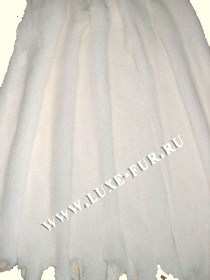
North American Mink
- The breed, which is bred on the beversers in the United States and Canada.
The hair cover of the skins has a sufficiently low speck, which is practically not visible due to dense and high subvention. Therefore, to the touch this mink like a velvet. Occasionally, the North American Mink appears with the so-called "super-short" hairproof. Such a mink has a form of a piping.
Since the number of north-American mink is relatively small (and in demand), and its quality of its fur is very high, such a product is considered exclusive.
North American mink for sale at auctions: American Legend (US, Seattle) and Nafa (Canada, Toronto). Minks are assigned one of two quality systems - American (American Legend® MINK trademark) or Canadian (Brand NAFA® MINK).
Black mink at the auction (American Legend) allocate the following quality indicators: Blackglama; GLMA, Standart. Other colors are quality - American Legend.
The black mink at the NAFA auction allocate the following quality indicators, males and females separately: Black Nafa; Silver; Unlabled.
At the same time, the best mink of the black shade gets its own name: American Blackglama ®.
, and Canadian- Black Nafa ®.
.
Blackglama brand is sold only by American Legend. This brand is assigned only a small percentage of the amount of the entire mink produced. After careful sorting by experts, only the best black mink receives a corporate label and passport. One lot (as a rule, it is 30 skins of females and 15 shkins of males) - one label.
The main difference between the Blackglama mink (Blackglamp) from the Scandinavian and Russian is the length of the ouva hair. It is almost the same with a length of squeezing, which gives the fur a special velvet look and texture. Natural Blackglamp is a mink very dark, at first glance, black. But if you look closely, you can see in it a light brownish shade. Such an effect, specialists call the "color of oil". Leather cloth is lightweight, plastic, without defects.
Since Blackgalla brand today is one of the most famous and consistent demand, it is often formed.
For Blackglama (Blackglamp) give out any skins with a short ust region, whose hair covers were painted black and bleached leather fabric. At the auction in 2011. Mink Bleklagma significantly increased in price.
Blacknafa is the best mink that comes out of the Canada's animal farms. Blacknafa and Blackglamp are very similar, and there are no serious differences, the price is about the same. Like Blackglamp, Blacknafa has a rich black color with a slightly noticeable brownish tide.
The length of the ouva hair in Nink Blacknafa and Blackglamp can vary greatly: there are also a lot of hair, which is strongly reminded by the Danish mink, but only has a more dense winding. There is a mink with extra short hair, when the level is left in level even below the subvention. Such a mink looks as if she was already plugged. But what kind of type was not mink under the brand name of Blacknaf, it always has excellent external characteristics: evenness of hair, elasticity and silkiness.
The peculiarities of both North American minks are that the parties of the skins coming from different farms of the continent can differ significantly from each other. Various conditions for feeding, content, climatic conditions have influence. 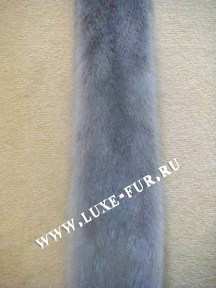
Because of this, the mink from different parties sometimes cannot be used in the same product - they are different in shades, height of the hair. Because of this, trading at auctions go to lots on individual farms, (in contrast to the Scandinavian mink, which, when sorting, do not take into account the origin). So the real mink of Blacknafa and Blackglamp, depending on its origin, may differ even on a shade: from black to almost brown, which is closer to the color of Mahagon. Such a mink with a clearly present brown tint is allowed to be toned in order to get the necessary black, which is the visiting card of this kind of mink.
Natural color of the cellular mink is very diverse thanks to the genes in the beasts (more than 100 colors and shades). They have different costs, depending on demand (with the same capacity).
Classify colored minks by groups:
Beige Group:
Pastel (Pastel) is the darker, chocolate color with a smoky-blue tint.
Topaz (Topaz) - lighter, shade of coffee with milk.
American Palomino (Palomino) - very bright as tea with milk (can be from St. Berevoye to a dark beige shade)
Pearl (Pearl) - light beige with a gray tint.
Lavender (Lavender) - beige with a pale lilac shade and very light squeezing.
Pink - light beige with a brown-pink tint.
Walnut - the shade of the Scandinavian mink of natural brown color.
ScanbroN (Scanbrown) - "Scandinavian brown" (darker shade).
SCANGLOW (Scanglow) - Finnish mink of light brown tone with a darker shade to the ridge (if the color of pouring too light gray shade, such a mink is considered defective and sold at a lower price). About 20% of the total mink fur on the Finnish Finnish Fur Sales Auction is the "Skanglow".
Demi Buff (Demi Buff) is a brown shade of the Scandinavian mink.
Mahogany (Mahogany) (Mahagon) is a classic natural color of mink (both in the American and Scandinavian) very dark rich brown shade with a darkest ridge strip. The cost of mink "Machod" is slightly higher than other dark brown mink shades (for example, the same mink "Skanglow").
Blue group
Silver-blue (SilverBlue) - Russian mink pure gray and bluish gray (but often with a dirty tint).
Aleutskaya - Dark Blue
Sapphire - pure blue color, hang blue.
Blue Iris (Aleuta Steel) (Blue Iris).
Violet (Violet) is the brightest of the Blue Group Finnish mink, has a light gray shade and a less noticeable transition from bright sides to a dark ridge. Violet is not suited to everyone because the light gray-blue shade is too "pale."
White group
Hedlund (American white) (White) - pure white with blue.
Darling basic color
Jet.
Lightening main coloring
Shadow (Shadow)
Silver-sable (polar mink) is a very rare mutation of the Finnish mink. Her fur has a very high submission and suck of brown, with a pronounced ridge, while the head and paws are brighter (more like a sable).
Rubber (black, sapphire, etc.): "Black Cross" is a natural color, on a snow-white backdrop a black ridge in the form of a pronounced cross. You can find on fur auctions and other beautiful charming mink options - Blue (Sapphire Cross), brown (Brown Cross), pastel ("Pastel Cross"), gray mink Silver Cross (Silver Cross). Such lots are sold quite rarely, and cost much more expensive.
Standard dark brown (STC) is a Russian mink, has a color from dark brown to brown, fluff into the tone of the isge. The cost of the skins is relatively low.
Standard black (STH used) - black-cutting hair, the fluff is dark gray, has a short and equalized hair.
ScanBleck (ScanBlack) - "Scandinavian black" - the name of the natural color of the Black Scandinavian mink (has a light brownish shade). The cost is inferior to black mink "Blackglamp", so products from it are obtained slightly cheaper and more affordable.
Blacknafa (BlackNafa) - American Natural Mink.
Marble (Marble) is a unique hybrid mink that has a dark yellow painting with chocolate divorces. Like some other hybrid minks, the "marble" is made by very small batches, therefore it is expensive.
GLOU (Glow) - "Glow"
Jaguar ("Jaguar") - unscreased white skins with black stains of uneven shape.
Gold (Gold) - gold - produced from the Scandinavian variety of mink. This tint is not natural, it is obtained by bleaching fur (like hair lightening). And the darker it was the initial raw material, the darker will be the final shade of "golden". Thus, it turns out the palette of a wide variety of shades: from very light brass and "white gold", to the color of copper and slightly greenish bronze. At the same time, in the color of the fur, the transition from the lighter shade of the sides to the darker color of the ridge, which leaves the feeling of "naturalness" of color.
Painted mink
Especially often dyeing (toning) is used when it is required to obtain from mink relatively light brown tone imitation of a more expensive dark brown mink. Thus, some fur manufacturers may even mislead their buyers, issuing a painted mink for a more valuable type of fur.
Use both simple staining technologies and more complex multi-layer dyeing technologies. For example, a mink of light color can be painted with reservation of the top of the oceliness, and then the effect of the so-called "snow vertex" is obtained on the skirt - "Snow-top".
In the conditions of modern production, by bleaching fur (like hair clarification), create a variety of shades "Golden" mink. And the darker it was the initial raw material, the darker will be the final shade of "golden". Thus, it turns out the palette of a wide variety of shades: from very light brass and "white gold", to the color of copper and slightly greenish bronze. At the same time, in the color of the fur, the transition from the lighter shade of the sides to the darker color of the ridge, which leaves the feeling of "naturalness" of color. Such a color gives the impression of the present "soft gold".
In addition, often use a variety of ways to enhance the color of the ridges to highlight them against the background of a brighter side of the skin.
The stencil dyeing mink allows you to paint under the leopard, tiger and other tropical predators. Today, using computer staining to mink, you can apply any multi-colored patterns. Such skins can be used not only for the manufacture of clothes, but also in the interior.
However, buying a fur coat from the painted mink, it must be borne in mind that the effects of chemicals included in the dyes, slightly reduces the wear resistance of the fur.
Shield mink
Designer's desire to expand the possibilities of using fur minks lead to the fact that it is not only painted in a wide variety of colors, but also change the texture of the fur. The pin - the fur removes the oave hair, after which only velvety will remain on the skirt. Mink pliers can combine with a haircut.
Stripped mink
The haircut of the mink - shortening the length of the osial hair mink. As a result, the fur is becoming shorter, but it is worth spending a hand on the skin, as they will then feel tingling, especially if it is stroking against the growth of the hairproof. Very often, the haircut is combined with other mink processing technologies, in particular, with tweezing. In this case, after extincting the astest, the resulting "velvet" is additionally equal to the desired height. And from such a "velvet" you can make the invoice "velvet" by applying the technology of multi-level fur shearing. Laser haircut allows you to apply a variety of volumetric patterns on the mink fur.
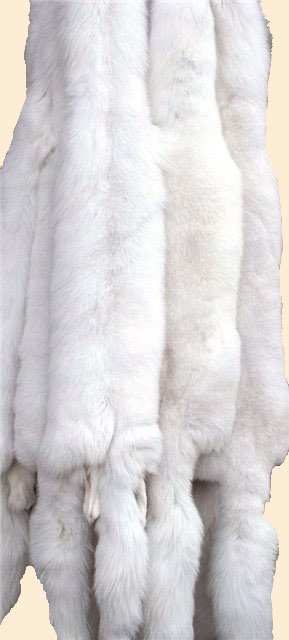 Lescent (Arctic Fox)
Lescent (Arctic Fox)
Fur sand is very warm, long-haired and densely. It is used, as a rule, to decorate products, on tailoring hats.
Skin of cell breeding sand and extracted by hunting are harvested.
The hunt is mostly producing white, they are valued; Blue mining little.
Blue sands are bred. Cell blue sands got from Norwegian fox.
Blue sands are: Wellegis (Norwegian) and silver (state-owned). Sizes Skuff: females Length 60-65cm, males 65-70 cm.
Mixes are found between weathered and silver, as well as between the foxes and the sands.
Skin sands are very thick. High height hair. Graphant color of the tip of the oest. It is important that the sustain is not weak (short), since you will hang out, (there is a flick of fur - partial or complete absence of astest).
Over the color of the hair cover, the sands are white and blue.
White are divided into two grades: extra - (pure white) and first (with a slight cream tint). White sand skins paint in different colors.
The skins of blue sands in color are divided into three varieties: extra (dark blue), first (light blue), second (dark brown and light brown).
White sand skins are sorted by ripples:
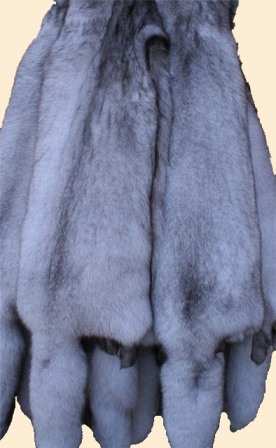
Cell blue sand skins They have very thick and lush hair cover, with elastic equated in height frequent lining hair. Without signs of chilence and the cross-section of the hairproof.
On the skins of weathered sand - has platinum hair: sucking white, and the tip of the astest of graphite color. The tops of the adhesive hair are white to the blue, that is, they are in the tone of the clarified part of platinum hair.
Silver sand skins are a white dump with a dark gray tip, and the fluff is gray.
Types of color:
Wellegal sands - hair cover of various intensity of pure gray color, without brown shade. The intensity of platinum hair is large, they are evenly distributed across the skin, forming a pronounced graphite veil. Put the light blue, zonally painted. Steady silverness (depends on equation).
Silver sands - skins pure gray color of various intensity. A light brown bloom on the worm and paws is allowed. Platinum hair large intensity, silver is not open. Platinum hair is uniformly distributed over the entire area. Let's hang gray.
At the Finnish fur auction, put a bid:
blue Sadow Fox (Blue Shadow Fox)
blue Fox (Blue Fox)
lescent Blochrost (Blue Frost Fox)
Raccoon (Raccoon)
The popular view of the Pushnin is brought to Russia from North America. Traditionally, the skins are extracted by hunting, but the cellular breeding of racca-rods also received great distribution.
American raccoon fur is pretty warm, has a beautiful appearance. The noise is 75%.
Hair cover hobged with dark brown and yellowish-brown ustye (painted by zonarly), browned down; Hair cover medium density with a significant predominance of down hair.
Tail with transverse black and brown stripes. Often, the skins of raccoon-rods are reflected by the lightening of individual-sighted hair in order to simulate under a silver-black fox.
Canada's exporting leaders, China, less than Lithuania, Finland, even less than Italy, San Marino.
In the Finnish fur auction - the skins of the Finnish raccoon are presented.
In the North American auction, too, there is a raccoon.
Racota-bands are not bred.
Retal dog
(Ussuriy raccoon) - free and cellular breeding.
Skirts differ from the skin of the raccoon: a striped tail and "mask" on the muzzle. The skin of the racker dog is a strong zonality of the hair cover, richly rude.
Thick leather fabric. Break 2 types: Golden (with orange subcase) and silver (gray let's drink), there are mutational forms - white.
The fur is very warm, the hair cover is very thick, the fluff is close to the fluff of goats, and longer than the sand.
Otter (Otter)
Very wearing fur - adopted for 100% standard.
Skuff is a dark chestnut hair cover to light brown; The height of the ocean 3cm, fluff 2 cm. Pooh is very soft, silky; Ut of tight, frequent, shiny, durable. Cherevo is very valuable. Gorld stain with silver. Hair cover on the worm is 1.5 times lower than on the ridge, but thicker. Shkuff length up to 1m. Thick leather fabric. It is considered a "male fur", for women's products - there are shield skins ..
Two ridges are distinguished: Northern (dark brown hair) and the southern (hairproker is more yellow).
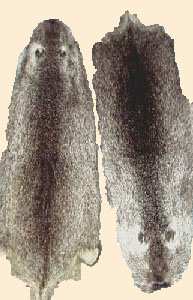 Nutria (Nutria)
Nutria (Nutria)
Nutria skins are used to tailoring products. Shkins of cigarette lard look like a mink.
Motherland - South of America, Spain. Cellular breeding in many countries.
Skirts of males more females by 10-15%. The tail is long not omitted (scaly).
Hair cover has a thick short reproach, the rolling is rude long, has a small angle of inclination to the leather tissue. It is often plucking. In the skins, it is especially valued to the Clavers, the assistant on the crash is less rigid and long, let's drink thick. Wildlife Wild Nutry Skuff Color - Brown, Ax of ash-gray at base and dark brown at the top, brown fluff.
Many colored breeds: smoky, cream, straw, white Severinsky, beige, white Italian, pearl, silver, golden, white Azerbaijani, black (Poland), lemon, snowy, pastel.
The best quality of the hairproof is a medium height with elastic tailoring hair, fully covered with the ridge, sides, the crash. Let the silky, very thick on the worm. The difference in the length of the fluff on the worm and the ridge is less than 2mm.
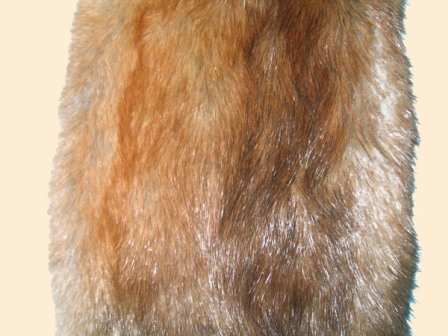 Ondatra (Musquash)
Ondatra (Musquash)
Ondatra skins are used both on tailoring products and finishing.
The hair cover is sufficiently thick, consists of an elastic oceliness and a soft silky fluff; Coloring dark brown or light brown and silver-white on the worm. Drochi-gray down hair at base and browned at the ends. We produce skins natural and painted in brown (under the mink).
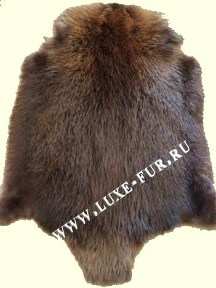 Beaver
Beaver
Beaver skins are used to tailoring products and finishing.
It is considered a "male" fur, since heavier (not cut and insensitive).
A very beautiful jackets are made from the shield and cutting beaver, they have a gentle, velvety, brilliant surface. Products have increased wear resistance.
The painting of the hairproof is always brown, in southern areas a little lighter. Pooh is very thick, soft, sucking long, tough.
On the worm of the hair cover is lean, rusting is shorter, softer, lighter. Long-crumbling hair is often cut.
Leather tight leather, thickened.
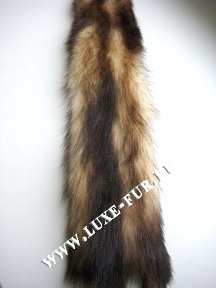 Horing (Polecat)
Horing (Polecat)
Horrel beautiful skins are golden with dark sudia. They are used both on tailoring of solid articles (outerwear, hats) and finishing.
Black (Forest) Horing is mined in the European part, in the Urals.
The color of the ridge is black and brown, the cravings and the sides are blonde, the Pooh is grayish, the tail is black and brown. The height of the hair is the largest on the ridge (4-5cm), less on the worm, even less on the head and neck.
White (steppe) chore - in the forest-steppe and steppe zone.
Hair cover is brighter, fluff white, cream; Owl black and brown (more rare on the ridge than in black). The tail is two-color: the base is white, and the coniferous.
The following ridges are distinguished: Orenburg, Saratov, Southeast, Central Asian.
Cell chori are different crossing of white and black chore, column and chore, chore and mink. Honoriki (chorine + mink) dark as sable. Albinos - Furo, African Horing, Fretko. They were crossed with black chore for improving the color, got golden choreans, pearl (more appreciated than golden; let's drink cream color), pastel (let's drink beige-brown, dust brown).
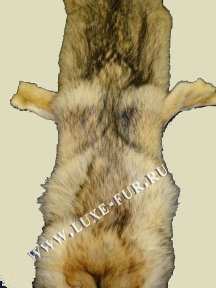 Wolf (Wolf)
Wolf (Wolf)
(Timber Wolf - Forest Wolf)
Polar Wolf skins - have. High, high, light (gray-blue) hairpots. A wolf from the steppe zone is a sleeper of sandy color.
Wolf skins are found - melanyst (black hair cover); Albino (pure white color); Chromist (red-colored).
The skin of the hair wolf is zerly colored (up to 5 zones). Thick leather tissue, rough.
The skin of the wolf - there is a mane, the hair cover on the worm is brighter than on the ridge; Hair streams go straight (and not to the center).
Since the big geographical variability in size of the skins, the color of the hair cover: the polar - hair cover is light gray, more lush, soft, high;
- Forest - Dark color, thick hair, but rude;
-U-steppe - the hair is low, rare, has a sandy shade; Skins are small.
The following ridges are distinguished: polar, Siberian, Kazakh, central, southern.
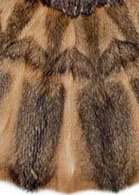 Jackal
Jackal
Skirts are mined in Central Asia, Kazakhstan. Smaller skins, hair cover below; The color is dark gray or rzavo-gray, the zhlevo lighter ridge.
Coyote (Coyote)
Coyote fur (Canada) is traditionally considered to be a male fur, along with a wolf fur, from which the coyote is characterized by the softness of the isva hair and pumped out thickness. Also coyote is used to make collars and cuffs. In recent years, many world-class designers have paid their attention to this rare type of fur, and the products from Coyota can be seen in their collections.
Rysoid Cat (Lynx Cat)
The skins of the fish-shaped cat belong to the rare form of the fur, mined a little. The cost is high.
Skirts of small wild cats:
Skirts of the forest cat - the hairproof soft, thick, silky; painting patronizing, black "belt" on the ridge,
swamp green coloring; The tail is painted with rings. District areas - in Europe, North Asia and Africa, meets in the CIS.
Kamyshki skins - large size, the hair is less soft, silky, rougher rougher; "belt"
drowned; Cleveo lighter - yellowish gray; Tassels on the ears. The extraction area is from Asia, the Transcaucasus to the south-west of China. We have on the coast of the Caspian Sea.
The skins of the steppe cat - the hair cover is less dense, low, but soft, silky; sand color with dark stains throughout the area, the fluff of blue; The tail of the zonarly painted (rings). Cherevo whitish with stains. Mining in steppe areas of Africa and the Middle East.
The skins of the Amur Cat - the hairproof thick, soft, reddish-red with dark spots; Zhevro is yellow-white, red stripes on drying (transverse). The tail is lush with dark rings. Mined in the Far East.
Lynx (Lynx)
This is one of the most expensive and rare types of fur. Fur Rys has a very beautiful natural color. The skins are especially valued by the Clavers. The hair cover on the worm (trouser) is brighter and soft with dark spots (than they are brighter, the more valuable). This fur is used mainly for finishing, however, sew and entire products.
The size of the skins can be different, thick thick, soft, silky.
The color is very beautiful, from the ash-blue to light gray, depending on the area of \u200b\u200bproduction, the drawing is stripes, stains.
Mining in Siberia, in Scandinavian countries (Norway, Sweden, Finland).
Mix the ridges: North and South.
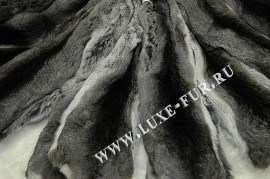 Chinchilla (Chinchilla)
Chinchilla (Chinchilla)
One of the most expensive fur. As light as thistledown. Wear resistance is not high (2-3 seasons). Fur is very hygroscopic, not suitable for wet weather.
The object of mass cell animalism, in Western Europe, Australia, South America.
Two types are divorced: large, or short-sided chinchilla (body length 35cm), and small-dollar (body length 25cm).
The hair cover of the chinchilla shtinchilla is very thick, dense, very soft and silky, equalized in height. Hair is colored zonar in gray tones. Leather fabric is very thin. Sizes are small.
The breeds of rabbits like chinchilla - Rex, Soviet chinchilla, Origlant were specifically replaced.
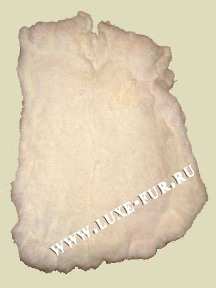 Rabbit (Rabbit)
Rabbit (Rabbit)
It is one of the inexpensive and popular types of fur semi-finished products.
The fur industry processes the skins of bunnies of fur rocks, suitable in height, thickness and elasticity of the hair cover for fume. The rest of the skins go to the felt.
The properties of the skins depend on the breed, age, climatic conditions, the slaughterhouse season.
The height of the cutting hair is 3-4.5 cm, fluff 2-2.5 cm. The thickness depends on the variety of skins. Area of \u200b\u200bmost skins 3-12kv.dm.
Natural painting of the hairproof depends on the breed. Heat shield properties of rolly skins, especially long-haired, high, but wear resistance is quite low (5-15% of the scope of the otter). During the operation of the products, the appearance of the fur deteriorates, the appearance of the fur deteriorates, the stunched sections appear in the zones of the greatest wear.
According to the method of finishing the hair cover, the skins are non-solemn, condensed and with a distant ust region, in color natural and painted.
Long-haired skins are stained in different colors, to simulate various valuable species of the fur (under a mink, sable, cunnits, chinchilla, fawn, chore, blue sand), draw a drawing by stencil dye under Barca, Ocelot, etc.
Stripped skins are also painted under the cat, nutrition, stencil drawings are applied on a white background and after coloring.
Special equipment allows you to endure original patterns with different hairproof heights. Sometimes a film coating is applied to the leather fabric.
In natural form, skins are used, possessing beautiful appearance and good quality hair.
A large number of breeds of rabbits are diverse color.
On the skins go:
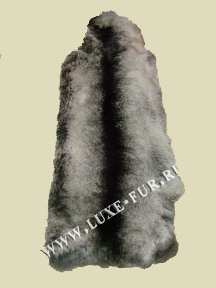
Rex - Rabbit breed, which has a smooth thick and very gentle hair cover, is perpendicular
leather tissue. It usually has a combined color: a dark back and white sides; There are snow-white and colored varieties. Rabbit-Rex is bred in Germany and China. Products are made from the skins, very often rabbit-Rex is used in knitting technology (weaving on a grid-based).
The first short-haired rabbits appeared in 1919 in France. In short-haired rabbits hair cover, and the isy and dying hair of almost one length, almost twice as shorter than that of long-haired rabbits.
Origa - Break only in France. Fur Oriamia warm, well worn and very beautiful. Larger skins than chinchilla skins. Leather tissue is thin, light, elastic, but dense. Hair is very soft and thin. The color of the hair cover is red-brown ("beaver") and gray-white ("chinchilla", and the latter is more rare and expensive.
Skirts of rabbit-Rex and Oriamia paint into various colors.
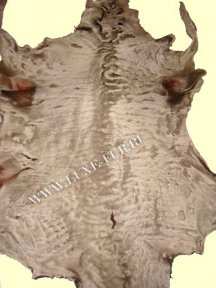 Karakulevo-Smashkovo-Merluble semi-finished
Karakulevo-Smashkovo-Merluble semi-finished
These are the skins of the lambs of a certain age of various breeds of sheep with primary hair: Karakulcha, Karakul (get from Karakul or secrets); Craushama, Merlushka, strap (from lambs of fine-mounted, half-rigorous, semigrupt and coarse and coarse rocks).
Karakulcha - skins with a very low shiny silky hair cover, which gives a beautiful mauric pattern on the surface of the skirts. The leather is very thin elastic.
Karakul - hair cover higher than that of Karakulchi and formed in the form of full curls. The curl shape may be different: Bob, Griva, Valek, - Therefore, the drawing on the skirt is different. Skirts with an overgrown hair cover (with fuzzy crushed curls) - already during sorting do not belong to the doodle, and such skins are no longer valued. Karakul skirt hair cover - soft silky. The skills of the purebred doodle of the hair cover is very brilliant, very silky, and different from the skins of unclean. Kozul skin leather fabric is thicker than the doculcia, but at the same time soft plastic.
Karakul (Karakulchu) is divided into black, gray (light gray, dark gray, black and gray, blue), color (brown, white, pink, sours, motley).
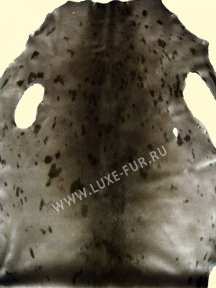 Fur sea semi-finished
Fur sea semi-finished
These are the skins of the Belomorsky, Baikal, Pacific and Caspian seals of various age groups:
Belek - Young seal skins under 15-20 days, with soft, long, thick embryonic hair cover of white or cream color, sometimes with a grayish or greenish tinge.
Khokhlachenok - cubs of cubs in chokhlach dark silver color.
Serchka and Sivar - Skins of a young and young seal with secondary hair (brilliant, low, smooth), gray or silver gray; At Baikal seal - with a greenish tint.

